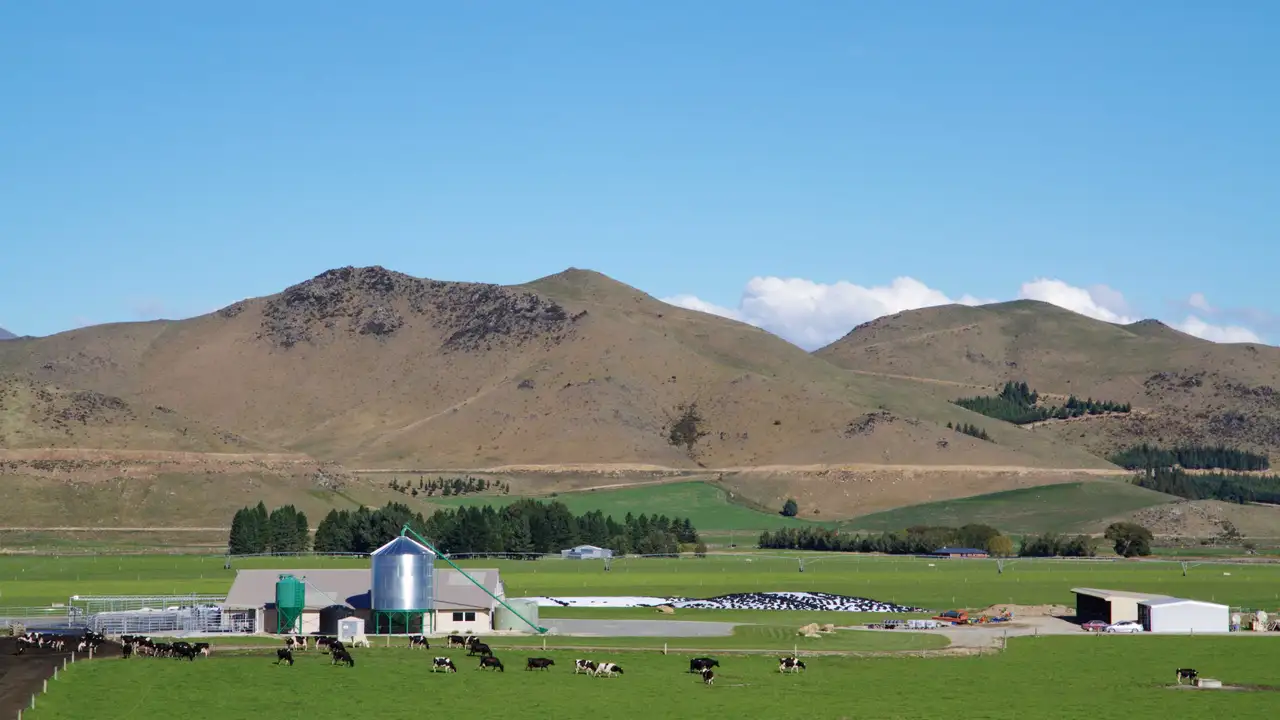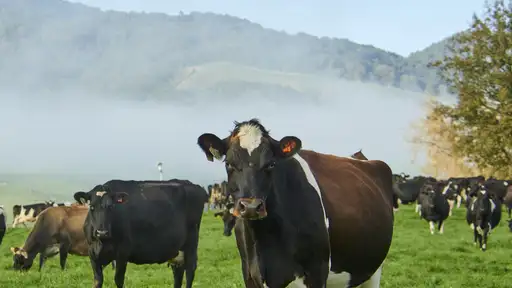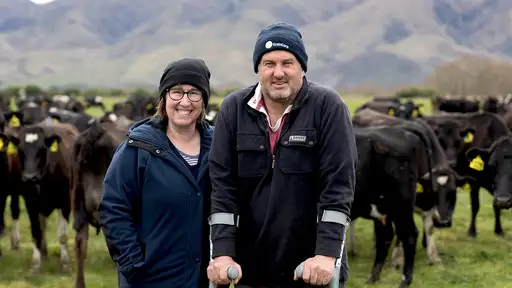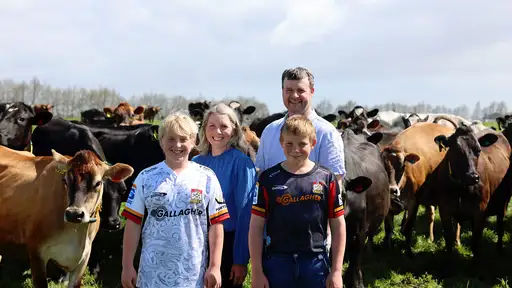
From the fully-irrigated farms of the south, to the heat and humidity of the dryland typically seen in the north, plans and techniques to manage through summer will vary from region-to-region.
However there remain some general principles and methods that are common to nearly all dairy farmers, and below are some key points to consider as the sun and wind take over from the rain and cold.
Plan & Review:
The goal is to keep as many cows in milk for as long as possible into autumn, and then reassess the changing situation regularly.
This must be done so long as it does not impact on the performance of the business next season (such as risking low average pasture cover, APC, and low body condition score, BCS).
Have a plan in place early and revise it every two weeks as dry conditions, and other variables, change.
Think about how you will adjust during these changes and write your ideas down.
Push feed forward:
Planning in spring to grow some summer crops can be a way of pushing quality summer feed from the springtime (of surplus grass) to a time when it’s needed more, and letting the cows do the harvesting.
Otherwise less crop area sprayed out should mean more grass silage harvested on farm.
Meanwhile, targeting poor-performing paddocks for summer crops can also improve the overall performance of the pastures.
Tactical use of nitrogen in December – to build APC higher and allow for rounds to be lengthened – is a proven method to push feed into a time of higher need.
Stocking rate:
Stocking rates need to be reduced where possible from February onward.
This can be done by culling cows that you won’t be keeping for next season.
You can also cull or dry off any cows that are drying themselves off and now gaining excessive condition.
Anything producing fewer than 0.5MS per day (5 litres) must be questioned (i.e. she’s likely to be consuming valuable supplements that she’s not providing a good return on – those supplements are better-directed to cows doing 1.5-2MS per day).
When you have done your final pregnancy test you will know which cows are empty.
It may be best to drop these first to save feed for the in-calf cows.
Space at the works can jam up, so slowly dropping cows every two weeks can alleviate that.
Rotation length:
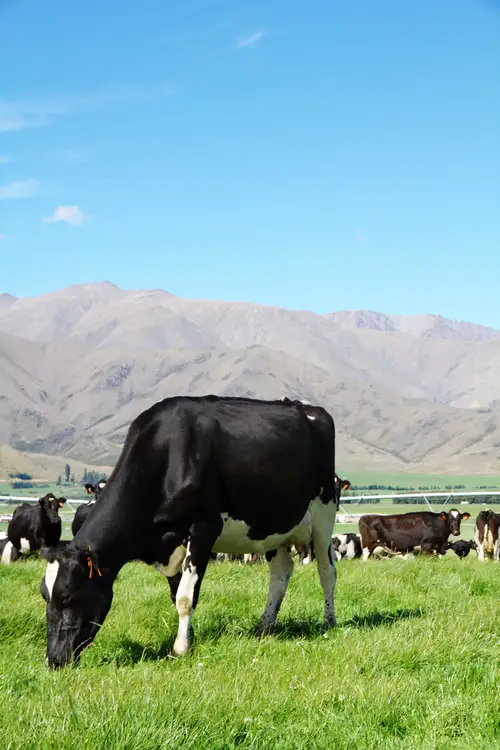
Most non-irrigated farms in summer will be on at least a 30-day round length through summer (irrigated may be able to hold at 21-25 days).
The maxim, ‘the drier the drought, the longer the round length’ holds true.
A slower round length allows for higher average pasture covers, which reduces the amount of evapotranspiration.
It also helps when drought-breaking rains arrive to maximise re-growth rates.
When it finally rains (50mm-plus) after a dry period on non-irrigated farms, a lot of the pasture will rot quickly and will reduce cow intakes further; this can be expected for 3-4 weeks while the pastures get growing again.
To help reduce the fall in milk production at this time, try to save some grass silage that you can feed to replace the ‘melting’ pasture.
Variable milking frequencies:
Milking once-a-day (OAD), three times in two days, or seven-in-ten are all options that will help keep as many cows as possible milking for longer into the summer and autumn (before drying off decisions have to be made).
Most cows will naturally partition energy away from milk production and will hold or gain some BCS.
Every eight weeks on OAD will provide an additional 0.25 BCS on cows, compared to continuing to milk twice-a-day.
Feeding levels should not be dropped when going onto OAD, but should actually be lifted for the first week to reduce the production drop.
Supplements:
Ring-fence any supplements that you know you will need for winter first, then think about what you have on-hand and how this will be best fed out.
The cheapest and most readily available feed is currently palm kernel (PK), and the economics of this in a feed deficit stacks up (with PK costing about 45 cents landed and fed per kg of DM).
When cows are grazing to a 1500 residual or less, expect a 70-100g milksolid response per kg of dry matter (DM) eaten. Therefore, there is a strong-enough margin that should allow for marginal feeding costs to be covered (when working on a $9 milk price).
Usually energy is all that is needed when considering cost-effective supplements, but on dryland farms the crude protein (CP) levels in the pasture can drop in very dry conditions, maybe to less than 16% CP.
At this level there will be some milk response to feeding a supplement that has higher CP, which may also help reduce fat evaluation index (FEI) grading issues.
Palm kernel is about 16% CP, so it only holds its own.
Maize silage is 8-9% CP, so this drops the total CP in the diet, but is still worth feeding when cows are at risk of being underfed.
You can look to add protein feeds to your PKE mixes, but these products quickly lift the cost.
Sacrifice paddock
If the dry does turn into a drought, reducing overgrazing of pastures will become imperative.
A great way to avoid overgrazing is to milk the cows into their allocation of 12 or 24 hours of pasture, and when a 1500-1600 kgs DM/ha residual has been achieved, move the cows onto a sacrificial paddock where supplements can be fed to them.
Cows can remain in the paddock until the next milking (or you can do this in reverse, when the cows can get all their pasture at night).
Perhaps the best paddock to sacrifice will be a poorer performing one that needs renovating, but good water and shade are also very important.
Replacements
Remember to keep an eye on your replacements out at grazing.
If your farm is drying out there is a good chance that so too is your grazier’s farm (out of sight should not mean out of mind!).
The summer and autumn months are often when good calves turn into below-target R1s.
Don’t assume. Go and check, and work out a plan if needed to protect them through the dry. Keep the communication lines open with your grazier.
Take the time to write your plan of what actions you will take and by when. And seek help if you need help planning these out.
